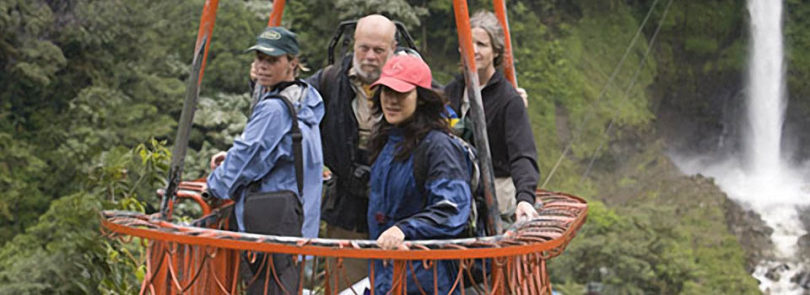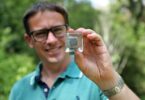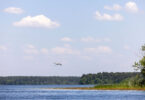As Bud and Mary Freeman describe a recent trip to Ecuador to collect fish samples and help guide local conservation policy, their story is abundant with color – giant electric blue butterflies, orchids rampant in the lush landscape and tropical fish species with a variety of interesting patterns. The duo served as volunteer collaborators with the Global Water for Sustainability Program, funded by the United States Agency for International Development. Their job was the first step in an effort to help those in the Ecuadorian Pastaza River Basin protect their rich biodiversity while meeting the needs of growing eco-tourism.
“Our challenge was to visit as many sites as possible in ten days,” said Mary Freeman, adjunct faculty member at the Odum School of Ecology and U.S. Geological Survey ecologist. “We were able to collect fish from 25 different sites which will establish a baseline survey of fishes in the area.”
Armed with backpack electrofishers, the Freemans, along with others including Seth Wenger, associate director of the Odum School’s River Basin Center, were able to send an electric shock through the water, prompting fish to flow into nets. After collecting the fish, they were photographed, had their fins clipped and were then preserved. Having these samples will enable policymakers to have an understanding of the richly varied biodiversity that will need to be protected in their conservation plan. In addition, this will arm them with necessary knowledge to make informed decisions about water quality, water supply, hydropower and more.
“We often had to drive over one-lane suspended wooden bridges and take makeshift cable cars across raging rivers,” explained Bud Freeman, faculty member of the Odum School of Ecology and director of the Georgia Museum of Natural History. “And once we reached our destination, a familiar sight would often be the local residents snorkeling, swimming, washing clothes and using spears to capture fish to eat or sell. The rivers are very much a part of daily life for the locals.”
In these bodies of water that ultimately flow into the Amazon River, the variety of fish is incredibly diverse. “In North America, we have one family of catfish with fewer than 50 species; in South America, there are multiple families of catfish with the largest having 700 described species,” said Mary Freeman.
And for the Pastaza River Basin, one of the most rapidly growing areas in the region, having clean water and dealing with regulatory issues is essential. Balancing this growth with protection of the natural world is the ultimate goal of this project.
This research will set the stage for student research opportunities, as well as provide collaborations between the River Basin Center, the Georgia Museum of Natural History and the Museo Ecutariano de Ciencias Naturales in Quito, Ecuador.
And so, between eating a local delicacy – guinea pig – and watching flocks of parrots fly above, the Freemans contributed to research that is very much relevant in not only South America, but North America as well. As our world becomes more urbanized, conservation plans that do not sacrifice the natural world are necessary and the GLOWS Project has taken the first step in helping to protect biodiversity.






